Home>Interior Design>How To Maximize Space In A Small Bedroom: 10 Clever Ploys
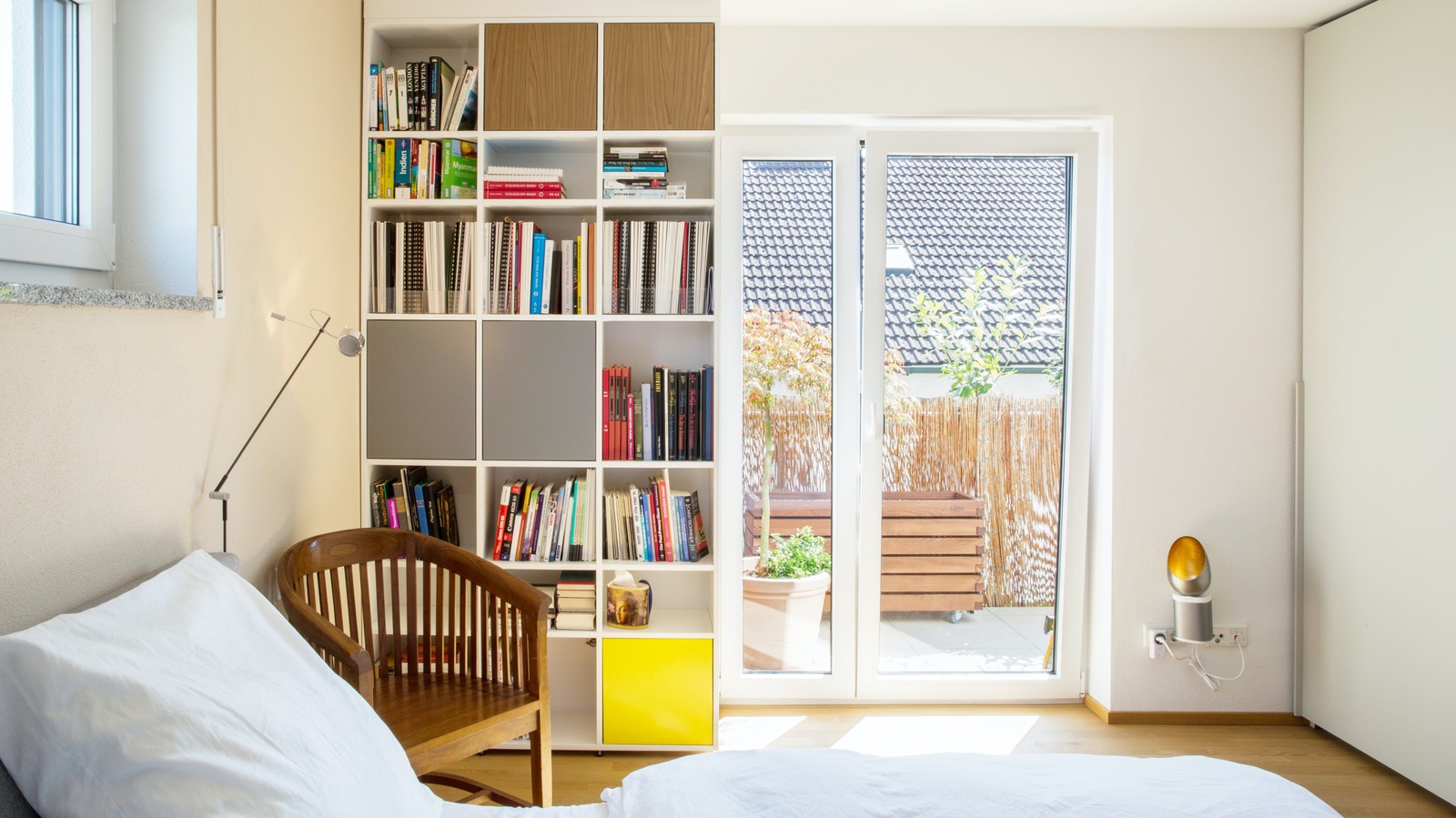

Interior Design
How To Maximize Space In A Small Bedroom: 10 Clever Ploys
Modified: January 6, 2024
Discover clever interior design strategies that will help you maximize space in a small bedroom. Implement these 10 ploys to create a functional and stylish room.
(Many of the links in this article redirect to a specific reviewed product. Your purchase of these products through affiliate links helps to generate commission for Storables.com, at no extra cost. Learn more)
Introduction
Welcome to a world where small spaces can still be stylish and functional. Whether you have a tiny bedroom in a city apartment or a cozy room in a suburban house, maximizing the available space is key to creating a comfortable and inviting environment. In this article, we will explore 10 clever ploys to make the most out of your small bedroom.
While it may seem like a daunting task to transform a cramped space into a room that feels open and airy, with the right design strategies and smart choices, it is entirely possible. By focusing on utilizing vertical space, optimizing furniture placement, and incorporating multi-functional pieces, you can create a bedroom that not only meets your needs but also creates a sense of spaciousness.
When it comes to small bedrooms, every inch counts. That’s why one of the first steps in maximizing space is to look up and make use of the vertical space available. Installing floating shelves or wall-mounted cabinets can provide valuable storage space without taking up precious floor space. Additionally, using tall bookcases or wardrobes can also help maximize vertical space while providing ample storage for clothing and personal belongings.
In addition to utilizing vertical space, it is important to strategically place furniture in a small bedroom. Placing the bed against a wall or in a corner can free up more floor space and create a more open feeling. Opting for streamlined furniture with clean lines and minimalistic designs can also contribute to a more spacious look.
Multi-functional furniture is a small bedroom’s best friend. Investing in a bed with built-in storage drawers or a lift-up mattress can eliminate the need for a separate dresser or wardrobe. Additionally, choosing a desk or vanity with built-in storage compartments can help keep your workspace clutter-free.
Organizing your closet efficiently is crucial in a small bedroom. Utilize space-saving hangers, hanging organizers, and closet dividers to maximize the storage capacity of your closet. Consider implementing a mix of open shelving, hanging rods, and drawer units to accommodate various types of clothing and accessories.
When it comes to shelving solutions, think outside the box. Install floating shelves near the ceiling to display decorative items or store less frequently used belongings. Use modular shelving units that can be customized and adjusted to fit your storage needs. Don’t forget the space above the bedroom door – adding a small shelf can be a great way to store extra items without taking up valuable floor or wall space.
Under-bed storage is a hidden gem in small bedrooms. Invest in under-bed storage containers or opt for a bed with built-in storage drawers to store extra linens, seasonal clothing, or bulky items. Utilizing this space will free up much-needed space in closets and other storage areas.
Smart lighting techniques can significantly impact the mood and perceived size of a small bedroom. Use a combination of ambient, task, and accent lighting to create a cozy atmosphere. Install wall sconces or bedside lamps to free up space on bedside tables. Mirrors can also work wonders in small spaces, reflecting light and giving the illusion of a larger room.
Speaking of mirrors, incorporating them into the bedroom design can instantly make a space feel bigger. Place a full-length mirror on a wall to visually expand the room. Adding mirrored closet doors or a standing mirror can also help create a more spacious and open feel.
Minimizing clutter is essential for maintaining a sense of space in a small bedroom. Keep surfaces clear and organized, and use storage options to hide away items that aren’t frequently used. Implement drawer dividers, decorative baskets, or stylish storage boxes to keep small items organized and out of sight.
Lastly, don’t underestimate the power of decorative tricks to maximize space in a small bedroom. Use light-colored paint or wallpaper to create the illusion of a larger space. Choose furniture with transparent or open designs to maintain a sense of openness. Hang curtains higher and wider than the window to create the illusion of taller and wider walls.
With these 10 clever ploys, you can transform your small bedroom into a stylish and functional oasis. Remember, creativity and smart design choices are essential when it comes to maximizing space. Embrace the challenge, and let your small bedroom shine!
Key Takeaways:
- Maximize space in a small bedroom by utilizing vertical space with floating shelves, tall bookcases, and loft beds. Optimize furniture placement, invest in multi-functional furniture, and embrace smart lighting and decorative tricks for a spacious and stylish oasis.
- Efficient closet organization, creative shelving solutions, under-bed storage, and mirrors can transform a small bedroom into a clutter-free and visually appealing retreat. Embrace light colors, textures, and decorative elements to create a cozy and personalized space.
Utilizing Vertical Space
In a small bedroom, vertical space is often overlooked but holds tremendous potential for storage and organization. By thinking vertically, you can effectively maximize the available space and create a visually appealing design.
One of the best ways to utilize vertical space is by installing floating shelves or wall-mounted cabinets. These can be placed above the bed, desk, or even along an empty wall. Floating shelves provide an excellent opportunity to display decorative items, such as books, plants, or curated artworks, while also creating extra storage space for essentials.
Another option to consider is incorporating tall bookcases or wardrobes. These floor-to-ceiling units not only provide ample storage for clothing and personal belongings, but they also draw the eye upward, visually expanding the height of the room. To keep the space looking cohesive, choose a bookcase or wardrobe that matches the overall style of the room.
If you have a high ceiling, don’t let that valuable space go to waste. Install a loft bed or elevated platform to create additional storage or a cozy reading nook underneath. This clever design strategy not only maximizes vertical space but also adds a unique touch to the room’s aesthetic.
When utilizing vertical space, it’s important to consider accessibility and convenience. Place frequently used items within easy reach while reserving higher shelves for less frequently accessed items. This will allow you to make the most of the vertical storage while still maintaining practicality.
Incorporating a pegboard or wall grid system can also be a game-changer when it comes to utilizing vertical space. These versatile solutions allow you to hang items like hats, bags, and jewelry, keeping them organized and easily accessible. You can even add hooks or baskets to further customize the storage options.
Remember to consider the weight-bearing capacity of your walls when installing shelves or wall-mounted storage units. Make sure to follow the manufacturer’s instructions and use appropriate hardware to ensure safety and stability.
By thinking vertically, you can transform a cramped small bedroom into a functional and visually appealing space. Embrace the height of the room and make the most of every inch available. From floating shelves to tall bookcases, the possibilities for utilizing vertical space are endless.
Optimal Furniture Placement
When it comes to maximizing space in a small bedroom, the placement of furniture plays a crucial role. Thoughtful and strategic furniture placement can create an open and functional layout, making the room feel larger and more comfortable.
One of the fundamental principles of furniture placement in a small bedroom is to prioritize the bed. The bed is usually the largest piece of furniture in the room, so it’s important to find the best spot for it. Placing the bed against a wall or in a corner can free up valuable floor space and create a sense of openness. Additionally, consider using a bed frame with built-in storage drawers to maximize storage opportunities without sacrificing space.
Another key aspect of optimal furniture placement is creating a flow in the room. Avoid placing furniture in a way that obstructs the natural path of movement within the space. Leave enough room to maneuver comfortably between pieces of furniture and ensure that drawers and doors can be opened fully without any obstructions.
If space allows, consider incorporating a desk or vanity into the bedroom. However, be mindful of the size and design of these pieces. Choose compact desks or vanities that offer storage solutions such as drawers or shelves underneath. Placing the desk or vanity near a window can also provide natural lighting for a pleasant working or grooming space.
In a small bedroom, it’s essential to scale furniture to the size of the room. Avoid oversized pieces that can overwhelm the space. Opt for furniture with clean lines and minimalistic designs, as they tend to visually open up the room and create a more spacious feel. Choose furniture with legs rather than heavy, solid bases, as this allows light to flow freely underneath and creates an illusion of more floor space.
Consider using furniture pieces that serve multiple purposes. For example, a nightstand with built-in drawers can double as extra storage for personal items, eliminating the need for a separate dresser. A bench with hidden storage can provide a seating area while also offering a place to store extra blankets or pillows. Multi-functional furniture is a great way to maximize space while maintaining functionality.
Utilizing corners effectively is another important consideration in small bedroom furniture placement. Use corner shelving units to display décor or store books and keep small essentials organized. Consider placing a cozy reading chair or a small writing desk in a corner to create a functional space without taking up too much room.
Lastly, don’t forget to leave some negative space in the room. While it may be tempting to fill every nook and cranny with furniture, leaving some empty floor space can help visually expand the room and create a more relaxed and airy ambiance.
By strategically placing furniture in a small bedroom, you can optimize the use of space while maintaining a balanced and visually appealing layout. Always consider the scale of furniture, the flow of the room, and the functionality of each piece. With a thoughtful approach, you can create a cozy and functional bedroom that feels spacious and inviting.
Multi-functional Furniture
In a small bedroom, finding furniture that serves multiple purposes is the key to maximizing space and functionality. Multi-functional furniture not only saves valuable floor space but also provides smart storage solutions and flexibility in the room’s design.
One of the most versatile and essential pieces of multi-functional furniture for a small bedroom is a bed with built-in storage. Instead of a traditional bed frame, opt for a platform bed or a bed with storage drawers underneath. This clever design allows you to utilize the often overlooked space beneath the bed for storing extra linens, clothing, or other items, freeing up space in your closets and drawers.
Another popular option for multi-functional furniture is a sleeper sofa or a daybed. These pieces serve as comfortable seating during the day and can be transformed into a bed for guests at night. Look for designs that have hidden storage compartments as well, allowing you to store extra pillows, blankets, or other items out of sight when not in use.
A coffee table with built-in storage is a great addition to a small bedroom. Look for a design that includes drawers, shelves, or even a lift-up top for storing books, magazines, remote controls, and other small items. This way, you can enjoy a functional surface for beverages or snacks while also keeping the space clutter-free.
If you work or study in your bedroom, investing in a desk with built-in storage is a wise choice. Look for a desk with drawers or shelves where you can store your work supplies, papers, and other essentials. Some desks even have integrated cable management systems to keep cords organized and out of sight.
Consider incorporating a vanity with a mirrored surface and drawers for storage. This will serve as a place for your morning routine and provide a dedicated space for getting ready. Look for vanities with adjustable mirrors and built-in lighting to add functionality and convenience to your daily routine.
Don’t forget about seating options! Incorporate ottomans or benches with hidden storage compartments. These can serve as extra seating when needed and provide a place to store items such as extra bedding, shoes, or seasonal clothing.
Modular furniture systems are also worth considering in a small bedroom. These systems typically consist of interlocking pieces that can be combined and rearranged to fit your changing needs. You can mix and match different modules to create custom storage solutions, such as bookshelves, dressers, or even a small workspace.
When selecting multi-functional furniture, pay attention to the quality and durability of the pieces. Look for sturdy construction and materials that will withstand daily use. Consider investing in furniture that can adapt to your changing needs over time, allowing you to repurpose it in different ways as your lifestyle evolves.
By incorporating multi-functional furniture in your small bedroom, you can optimize the use of space while adding versatility and practicality to the room’s design. Explore different options that meet your specific needs and preferences, and enjoy the benefits of furniture that serves more than one purpose.
Efficient Closet Organization
In a small bedroom, effective closet organization is essential for maximizing the available space and ensuring that everything has its place. By implementing smart storage solutions and utilizing the closet space efficiently, you can create a functional and clutter-free environment.
The first step in efficient closet organization is decluttering and sorting through your belongings. Take the time to go through your clothes, shoes, and accessories and determine what you truly need and use regularly. Consider donating or selling items that no longer serve a purpose or bring you joy.
Once you have decluttered, it’s time to assess the storage potential of your closet. Install a mix of hanging rods, open shelving, and drawer units to accommodate various types of clothing and accessories. Utilize the vertical space by installing double hanging rods or extendable rods to make the most of the closet’s height.
Consider using specialty hangers for maximizing space and keeping clothing organized. Velvet hangers are slim and have a non-slip surface, allowing you to fit more items on the rod. Hangers with cascading hooks or clips are great for organizing scarves, belts, or ties.
Take advantage of the back of the closet door for additional storage. Install hooks or an over-the-door shoe organizer to store shoes, bags, or accessories. Consider using hanging organizers with multiple pockets for storing smaller items like socks, underwear, or jewelry.
Foldable items, such as sweaters or t-shirts, can take up a significant amount of space in drawers. Utilize drawer dividers to separate different types of clothing and keep them organized. You can find adjustable or customizable dividers to accommodate different sizes and styles of clothing.
If you have limited drawer space, consider using storage boxes or bins on the closet shelves to keep items organized and easily accessible. Label the boxes or bins to ensure that you can find what you need without rummaging through everything.
Utilize the floor space in the closet by placing shoe racks or storage cubes. Shoe racks provide an organized way to store your footwear while minimizing clutter on the floor. Storage cubes can be used to store folded items, handbags, or even accessories. You can find options with removable or foldable compartments to customize the storage space to your needs.
For small accessories such as jewelry or belts, invest in compartmentalized trays or drawer organizers. These not only keep items organized and easily accessible but also prevent tangles or damage. You can find a range of sizes and materials to fit your specific needs and style.
Lastly, maintain organization by regularly decluttering and reevaluating your closet contents. Remove items that you no longer wear or need, and make adjustments to your storage solutions as necessary. Keeping a well-organized closet will make it easier to find what you’re looking for and allow you to fully optimize the available space.
Efficient closet organization is key to maximizing space in a small bedroom. By utilizing a mix of hanging rods, shelving, and drawers, keeping items organized, and making use of vertical and floor space, you can create a functional and clutter-free closet. With a well-organized closet, you’ll be able to enjoy a more streamlined and efficient morning routine and maintain a tidy and peaceful bedroom.
Creative Shelving Solutions
Shelves are not just for books anymore! When it comes to maximizing space in a small bedroom, creative shelving solutions can be a game-changer. They not only provide additional storage but also act as decorative elements, adding personality and charm to the room. Here are some clever ideas for utilizing shelves in your small bedroom.
One of the most popular and versatile shelving solutions is the floating shelf. Floating shelves are mounted directly onto the wall without visible brackets, creating a clean and minimalist look. They can be installed in various sizes and configurations to fit your specific needs. Use floating shelves near the ceiling to display decorative items or store less frequently used belongings.
Another creative shelving option is to make use of corner space. Install corner shelves to create an eye-catching display of books, plants, or personal treasures. Corner shelves are ideal for small bedrooms because they take advantage of an otherwise unused area, providing both storage and visual interest.
If you have a small alcove or niche in your bedroom, consider adding built-in shelves. Built-in shelves are customized to fit the specific dimensions of the space, allowing you to make the most of every inch. Whether you choose to display books, photographs, or decorative items, built-in shelves seamlessly integrate with the room’s design while providing functional storage.
Don’t overlook the space above your bedroom door. Install a small shelf across the top of the doorway to store extra items without taking up valuable floor or wall space. This clever solution can be used to display decorative accents or store items like baskets, books, or small plants.
If floor space is limited, consider adding shelving units that attach to the sides of your bed frame. These bedside shelves provide a convenient place to keep essentials like books, glasses, or a phone within arm’s reach. Look for options with built-in charging ports or USB outlets for added functionality.
Hanging shelves are another creative solution for small bedrooms. These shelves are suspended from the ceiling, saving valuable floor space while adding a unique design element. Hang them near a window to create a plant-filled display or install them above a desk to store office supplies and create an organized workspace.
Repurpose everyday objects into shelving solutions. For example, mount wooden crates on the wall for an instant rustic shelf. Stack vintage suitcases to create a unique and functional shelving unit. Utilize floating bookshelves, which are specially designed to hold books in a way that creates an illusion of a floating stack.
Incorporate open shelving into your closet design. By removing closet doors and replacing them with open shelves, you create a visually open space and can showcase your favorite clothing and accessories. Just make sure to keep the shelving organized and visually appealing by arranging items neatly and using stylish storage solutions.
When choosing shelves, consider materials and finishes that complement your bedroom’s style. From sleek and modern to rustic and distressed, there are various shelving options to suit your aesthetics. Remember to balance functionality with aesthetics to create a visually pleasing and practical storage solution.
Shelves are not only functional but can also enhance the overall design of your small bedroom. Whether floating, built-in, or hanging, creative shelving solutions provide additional storage and a platform to display your favorite items. With a little creativity and proper installation, shelves can take your small bedroom to the next level of organization and style.
Consider using multi-functional furniture, such as a bed with built-in storage or a desk that can also serve as a bedside table. This will help maximize space in a small bedroom while still providing necessary functionality.
Utilizing Under-bed Storage
When it comes to maximizing space in a small bedroom, one area that is often overlooked is under the bed. Utilizing the space beneath your bed for storage is a clever and efficient way to keep your belongings organized and free up valuable closet and drawer space. Here’s how you can make the most of under-bed storage in your small bedroom.
Invest in under-bed storage containers specifically designed to fit the space. These containers can be made of plastic, fabric, or even woven materials. They come in a variety of sizes, allowing you to choose the ones that best suit your storage needs. Opt for containers that have lids or covers to protect your items from dust and other potential damage.
Before selecting under-bed storage containers, measure the clearance height between the floor and the bottom of your bed frame. This will ensure that the containers you choose fit comfortably and can easily slide in and out. Keep in mind that if your bed has a low clearance, you may need to look for containers that have a shallower depth.
Under-bed storage is perfect for storing seasonal clothing that is not currently in use. Store your out-of-season clothes, such as heavy sweaters or bulky winter coats, in vacuum-sealed bags to save even more space. These bags compress your clothes, making them flat and easy to stack in the under-bed storage containers.
Utilize under-bed storage for extra bedding, including pillows, blankets, and sheet sets. Vacuum-sealed bags can also be used to store these items, helping to save space and keep them fresh. Consider categorizing your bedding items and labeling the storage containers for easy access.
If you have a large shoe collection, under-bed storage can be your new best friend. Use shoe storage boxes or specially designed shoe organizers that slide under the bed. These organizers typically have slots for each pair of shoes, keeping them organized and protected from dust. Clear containers or labeled boxes can make it easy to find the right pair of shoes without having to dig through a pile.
Under-bed storage is not limited to just clothing and shoes. It can also be used for storing books, keepsakes, craft supplies, or even extra toiletries. Group similar items together and place them in labeled containers for quick and easy access when needed.
Consider investing in a bed frame with built-in storage drawers. This type of bed frame provides a convenient and accessible storage solution without the need for additional containers. These drawers can be used to store a variety of items, from clothing to books to extra bedding.
When using under-bed storage, it’s important to keep the area clean and free from dust. Regularly vacuum or sweep under the bed to minimize dust accumulation. If you’re concerned about dust or allergens, consider using bed risers or using a bed skirt to create a barrier between the storage containers and the floor.
Under-bed storage is an excellent way to optimize space in a small bedroom. It allows you to store a variety of items conveniently and keeps them out of sight, leaving your bedroom looking tidy and organized. By utilizing this often-unused space, you can maximize the efficiency of your bedroom storage while still keeping your essentials within reach.
Smart Lighting Techniques
In a small bedroom, lighting plays a crucial role in creating a welcoming and visually appealing space. With the right lighting techniques, you can enhance the perceived size of the room, create different moods, and make the most of the available space. Here are some smart lighting techniques to consider for your small bedroom.
Start by incorporating a variety of lighting sources in the room. This includes ambient lighting, task lighting, and accent lighting. By layering different types of lighting, you can create depth, warmth, and functionality in the space.
Ambient lighting sets the overall mood and provides general illumination in the room. In a small bedroom, avoid using harsh overhead lighting, as it can make the space feel cold and uninviting. Instead, opt for soft and diffused lighting options like ceiling-mounted fixtures with dimmers, pendant lights, or even wall sconces. This allows you to adjust the light level to suit your preferences and create a cozy atmosphere.
Task lighting is essential for specific activities such as reading, working, or grooming. Place a bedside lamp or wall-mounted reading light near the bed for nighttime reading or relaxation. If you have a desk or vanity in your bedroom, ensure that it is well-lit with a dedicated desk lamp or overhead lighting to provide ample illumination for tasks.
Accent lighting adds a touch of style and highlights specific features in the room. Use it strategically to draw attention to artwork, architectural details, or decorative elements. Install adjustable spotlights or track lighting to create focus and drama. LED strip lights are also a popular choice for adding ambient light to shelves, underneath furniture, or along the perimeter of the room.
Natural light is a valuable asset in a small bedroom, as it can make the space feel more spacious and open. Make the most of any windows in the room by keeping them uncovered or using sheer curtains to allow natural light to filter through. Avoid heavy drapes or blinds that block out natural light and make the room feel smaller.
Mirrors can work wonders in small spaces by reflecting light and giving the illusion of a larger room. Strategically place mirrors opposite windows or light sources to bounce natural and artificial light around the room. A full-length mirror on a wall can also add depth and make the space feel more expansive.
To create a cozy and inviting ambiance, consider using warm-toned light bulbs or LED lights. Warm lighting helps to create a relaxing and comfortable environment, particularly in the evening when you want to wind down and prepare for sleep. Avoid cool-toned or fluorescent lighting, as it can make the space feel harsh and sterile.
Use lighting fixtures that don’t take up valuable floor or surface space. Wall-mounted sconces or pendant lights free up bedside tables and desk surfaces, allowing for more functional use of the limited space available. Opt for fixtures with adjustable arms or swivel heads to direct light where it is needed most.
Install smart lighting options that can be controlled remotely or programmed for different settings. Smart bulbs, for example, can be connected to your smartphone or home automation system to adjust lighting levels or color temperature according to your preference. This allows you to easily create different moods or adjust lighting settings without the need for multiple fixtures.
Remember to create a balanced lighting scheme that considers both functionality and aesthetics. Experiment with different lighting combinations to find what works best for your small bedroom. Lighting has the power to transform a space, and with smart techniques, you can create a beautiful and functional environment that feels bright, spacious, and inviting.
Mirrors for Illusion of Space
Mirrors are a powerful and effective tool for creating the illusion of space in a small bedroom. They have the ability to reflect light, open up the room, and make it appear larger and more airy. By strategically placing mirrors, you can maximize the perceived size of your small bedroom and enhance its overall aesthetic. Here are some tips for utilizing mirrors to create the illusion of space.
First and foremost, consider the size and placement of mirrors in your small bedroom. Opt for large mirrors that cover a significant portion of the wall. The bigger the mirror, the more light it will reflect, and the more expansive the room will appear. If you have a small wall opposite a window or a door, consider hanging a floor-to-ceiling mirror to amplify natural light and create a sense of depth.
Place mirrors strategically to maximize their impact. Opt for positioning mirrors opposite windows or light sources to reflect natural or artificial light and create a bright and airy atmosphere. This will make the room feel more spacious and inviting. If you have a beautiful view from your window, position the mirror to capture and enhance that view, giving the room an added sense of depth and beauty.
Consider incorporating mirrored furniture in your small bedroom. Mirrored dressers, nightstands, or wardrobes not only serve a practical purpose but also reflect light and create the illusion of more space. These pieces can be particularly effective if placed near windows or sources of natural light, as they will bounce the light around and make the room feel brighter and more expansive.
Experiment with different mirror shapes and styles to enhance the aesthetics of your small bedroom. Round or oval mirrors can soften the sharp lines of a room, while rectangular or square mirrors can add a contemporary touch. Consider framed mirrors that complement the overall design of the room. A decorative frame can add a touch of elegance and make the mirror a focal point in the space.
If space allows, consider creating a mirror gallery wall. Arrange a collection of mirrors in different shapes and sizes on one wall to create a visually interesting display. This will not only make the room feel larger but also add a decorative element to your small bedroom. Be mindful of not overcrowding the wall and maintain a sense of balance and harmony in the arrangement.
Don’t forget about using mirrors on closet doors. Installing mirrored closet doors visually expand the room, and they also serve a functional purpose by providing a full-length mirror for dressing. This eliminates the need for a separate mirror and saves valuable space.
Consider incorporating a mirrored wall panel or a mirrored backsplash behind a desk or vanity area. This will not only create a luxurious and glamorous look but also reflect light and make the space feel more open. It can also add depth and dimension to the room, making it appear larger than it actually is.
Remember to keep the mirrors clean and free from smudges or marks. Regularly clean the mirrors with a non-abrasive glass cleaner to maintain their reflective and enhancing properties. A clean and well-maintained mirror will have a greater impact on the overall illusion of space in your small bedroom.
With the strategic placement of mirrors, you can create the illusion of a larger and more spacious bedroom. Whether using large wall mirrors, mirrored furniture, or creating a mirror gallery wall, be intentional in incorporating mirrors into your small bedroom’s design. By reflecting light and opening up the space, mirrors can transform your small bedroom into a visually stunning and inviting retreat.
Minimizing Clutter
In a small bedroom, clutter can easily accumulate and make the space feel chaotic and overwhelming. To create a serene and organized environment, minimizing clutter is essential. With some smart strategies and a bit of decluttering, you can transform your small bedroom into a tidy and peaceful retreat.
Start by decluttering your bedroom. Remove any items that are no longer needed, used, or loved. Go through your clothes, shoes, accessories, and personal belongings, and donate or sell anything that no longer serves a purpose. Be ruthless in your decision-making and keep only the essentials.
One of the most effective ways to minimize clutter in a small bedroom is to create designated storage spaces for different categories of items. This can include a wardrobe for clothing, a shoe rack for shoes, and drawers or shelves for accessories. By having a specific place for everything, you can easily find and store your belongings, eliminating the need for unnecessary clutter.
Utilize storage containers and organizers to maintain a clutter-free environment. Use decorative baskets, bins, or boxes to store items such as scarves, belts, or extra blankets. Drawer dividers can be used to separate socks, underwear, and other small items. Labeling the containers can also make it easier to find and access what you need quickly.
Make use of vertical space to store items and keep surfaces clear. Install floating shelves or wall-mounted organizers to display books, plants, or decorative objects. Utilize hooks or hanging organizers for bags, hats, or jewelry. By using the vertical space, you can create extra storage without sacrificing valuable floor space.
Create a daily tidying habit to prevent clutter from accumulating. Take a few minutes each day to put items back in their designated places, make the bed, and tidy up surfaces. Adopting a “one in, one out” rule can also help minimize clutter. For every new item you bring into the bedroom, donate or discard an older item.
Consider investing in furniture with built-in storage solutions to maximize space and minimize clutter. Beds with storage drawers, ottomans with hidden compartments, and coffee tables with shelves are just a few examples of furniture that can provide both functional and hidden storage.
Choose furniture and decor with a minimalist approach. Opt for sleek and streamlined designs that minimize visual clutter. Avoid excessive ornamentation or busy patterns that can make the space feel crowded. Keep the color palette simple and cohesive to create a harmonious and serene atmosphere.
Keep surfaces clear of unnecessary items. Nightstands, dressers, and desks should only hold essential items that are used frequently. Avoid accumulating too many decorative objects that can lead to visual clutter. Embrace a minimalist approach and carefully curate the items on display.
Maximize the space under your bed for additional storage. Utilize under-bed storage containers or invest in a bed frame with built-in drawers. This can be an ideal place to store items like seasonal clothing, extra bedding, or bulky items that are not needed on a daily basis.
Finally, regularly reassess your belongings and declutter as needed. Take the time to review your storage spaces and identify any items that are no longer used or loved. By regularly decluttering, you can maintain a clutter-free bedroom and ensure that the space remains organized and serene.
Minimizing clutter is crucial in a small bedroom to create a sense of calm and spaciousness. By decluttering, organizing, and adopting smart storage strategies, you can enjoy a clutter-free and harmonious environment. Remember, less is more, and a minimalist approach can transform your small bedroom into a peaceful and inviting haven.
Decorative Tricks
In a small bedroom, the right decorative tricks can make a huge difference in creating a visually appealing and inviting space. By incorporating clever design and decorative elements, you can enhance the aesthetics of your small bedroom and make it feel more spacious and personalized. Here are some decorative tricks to consider:
Choose a light and neutral color palette to create an illusion of space. Light colors, such as white, cream, pale gray, or pastels, reflect light and make the room feel brighter and more open. Avoid using dark or bold colors that can make the space feel smaller and more confined. However, feel free to add pops of color through accessories or artwork to add personality and interest.
Mirrors, as mentioned earlier, are not just for the illusion of space. They can also serve as decorative elements and make a statement. Consider incorporating decorative mirrors in interesting shapes or with unique frames to add a touch of elegance and style to your small bedroom.
Add texture to the room through textiles and fabrics. Incorporate cozy rugs, throw blankets, and pillows made from plush materials to create a warm and inviting atmosphere. Layering different textures, such as knits, faux fur, or natural fibers, can add depth and visual interest to the space.
Introduce patterns and prints in moderation to avoid overwhelming the room. Opt for subtle patterns or use them as accents through throw pillows, bedding, or curtains. Stripes, geometric shapes, or botanical prints can add a touch of visual interest and create a dynamic yet cohesive look.
Consider incorporating wallpaper or a feature wall to add depth and dimension to your small bedroom. Opt for wallpaper with a delicate pattern or a muted color palette to avoid overwhelming the space. A feature wall can create a focal point and draw the eye away from the size limitations of the room.
Utilize window coverings that let in natural light while also providing privacy. Choose light-colored curtains or blinds that can be easily opened to allow maximum light into the room. Sheer curtains are a great option as they let light through while still offering a sense of privacy.
Choose furniture with transparent or open designs to maintain a sense of openness in your small bedroom. Glass or acrylic furniture pieces, like a bedside table or desk, can give the illusion of more space as they visually take up less visual weight. This creates an airy and light atmosphere.
Bring in greenery through indoor plants to add freshness and vitality to your small bedroom. Choose plants that thrive in low-light conditions and don’t require a lot of maintenance. Hang plants from the ceiling or place them on shelves to add a vertical element and make use of the available space.
Use lighting fixtures as decorative elements. Select chandeliers, pendant lights, or wall sconces in stylish designs that add a touch of elegance and charm to your small bedroom. Incorporating soft and warm lighting can create a cozy and intimate ambiance.
Add personal touches and display cherished items that hold sentimental value. Hang photographs, artwork, or mementos on the walls to make the space feel more personalized and tell your story. However, be mindful of not overcrowding the walls, as too many items can make the room feel cluttered.
Lastly, declutter regularly and keep the room organized. A clean and well-organized small bedroom will always appear more spacious and visually pleasing. Storage solutions that blend seamlessly with the decor, such as stylish baskets or decorative boxes, can help keep clutter at bay while adding to the overall aesthetic of the room.
By incorporating these decorative tricks into your small bedroom, you can create a stylish and visually pleasing space. Remember to strike a balance between functionality and aesthetics, and let your personal style shine through. With some thoughtful design choices, even the smallest bedroom can become a cozy and inspiring sanctuary.
Frequently Asked Questions about How To Maximize Space In A Small Bedroom: 10 Clever Ploys
Was this page helpful?
At Storables.com, we guarantee accurate and reliable information. Our content, validated by Expert Board Contributors, is crafted following stringent Editorial Policies. We're committed to providing you with well-researched, expert-backed insights for all your informational needs.
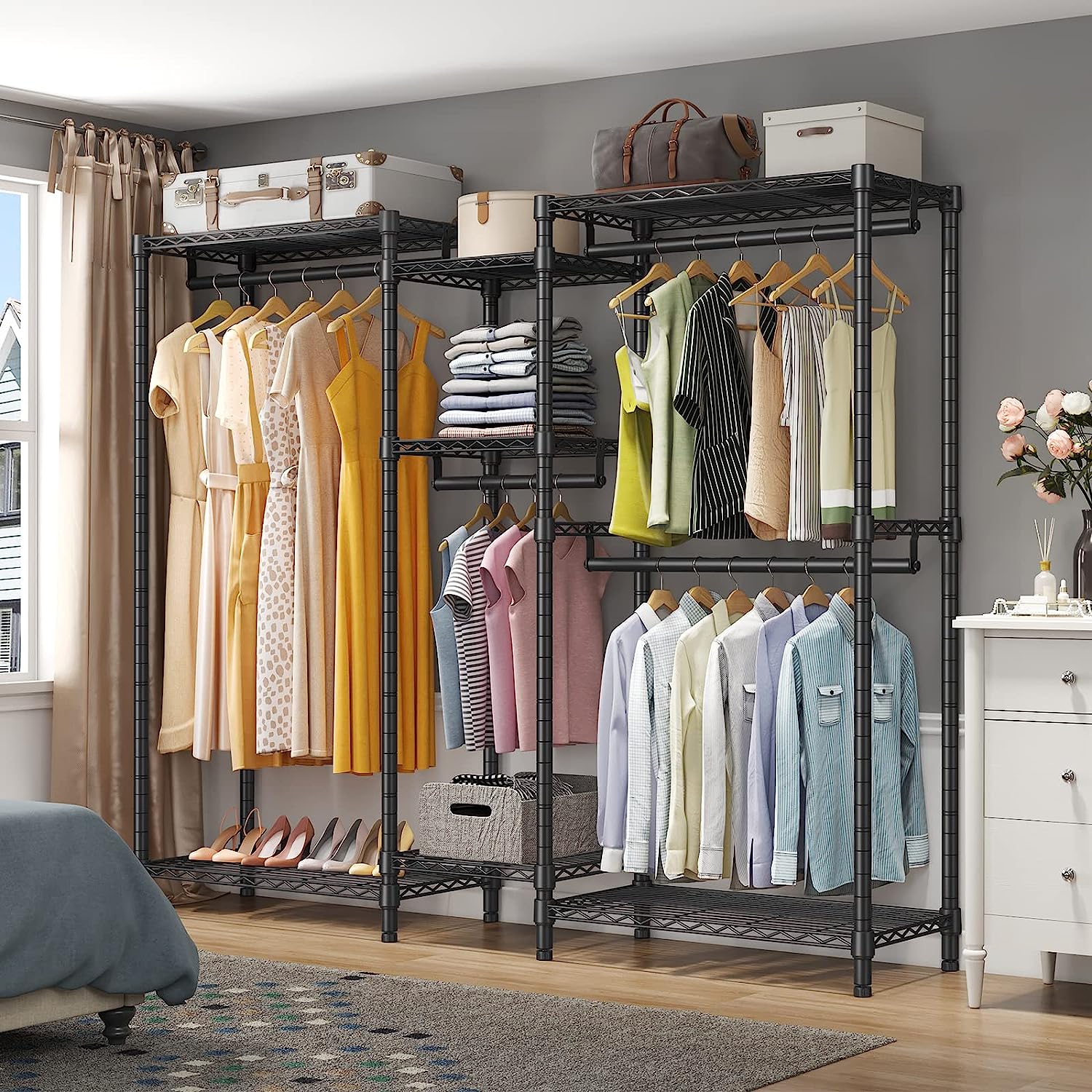
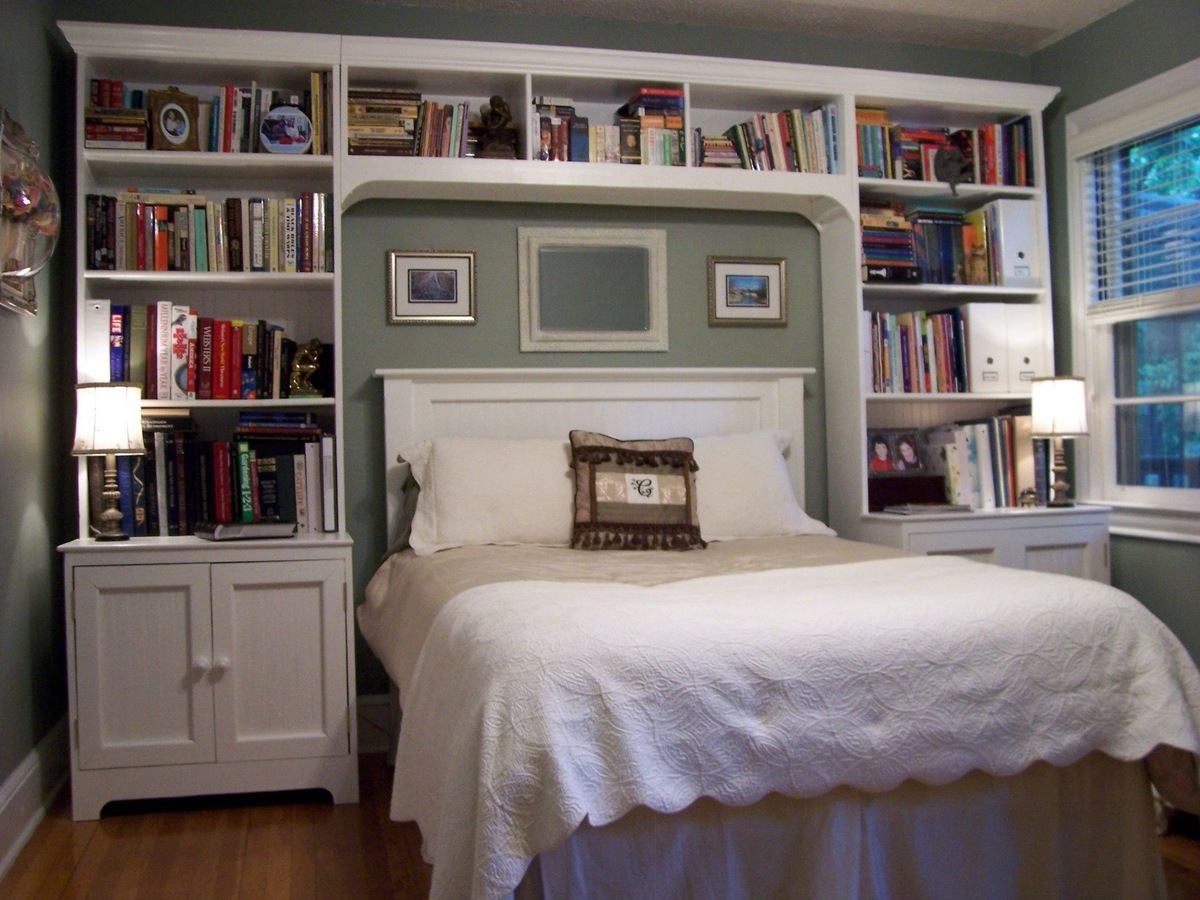

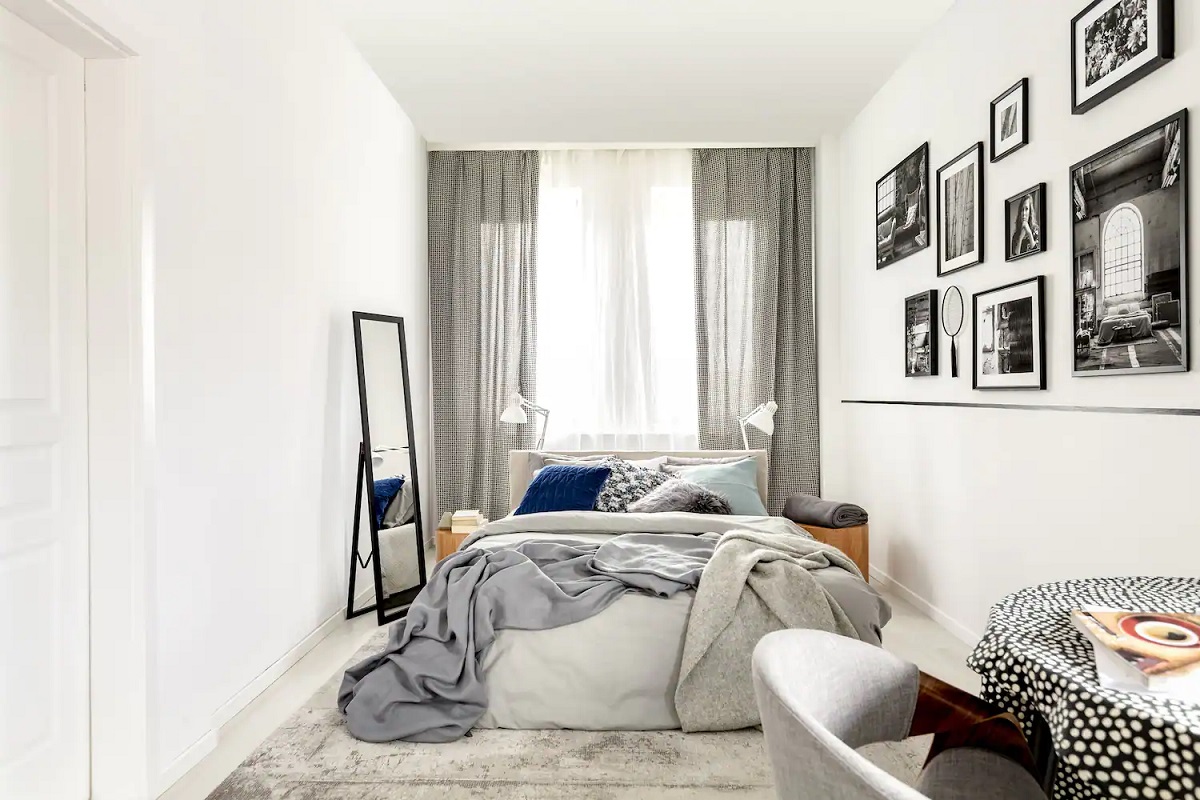
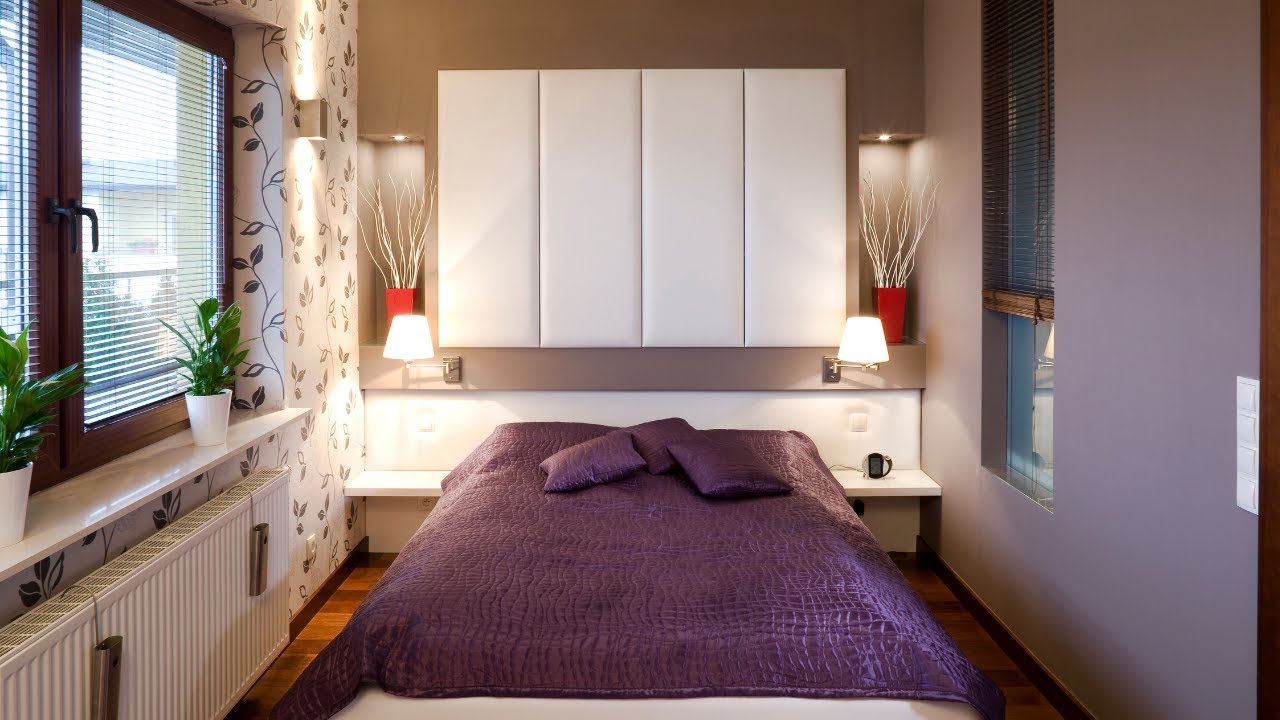
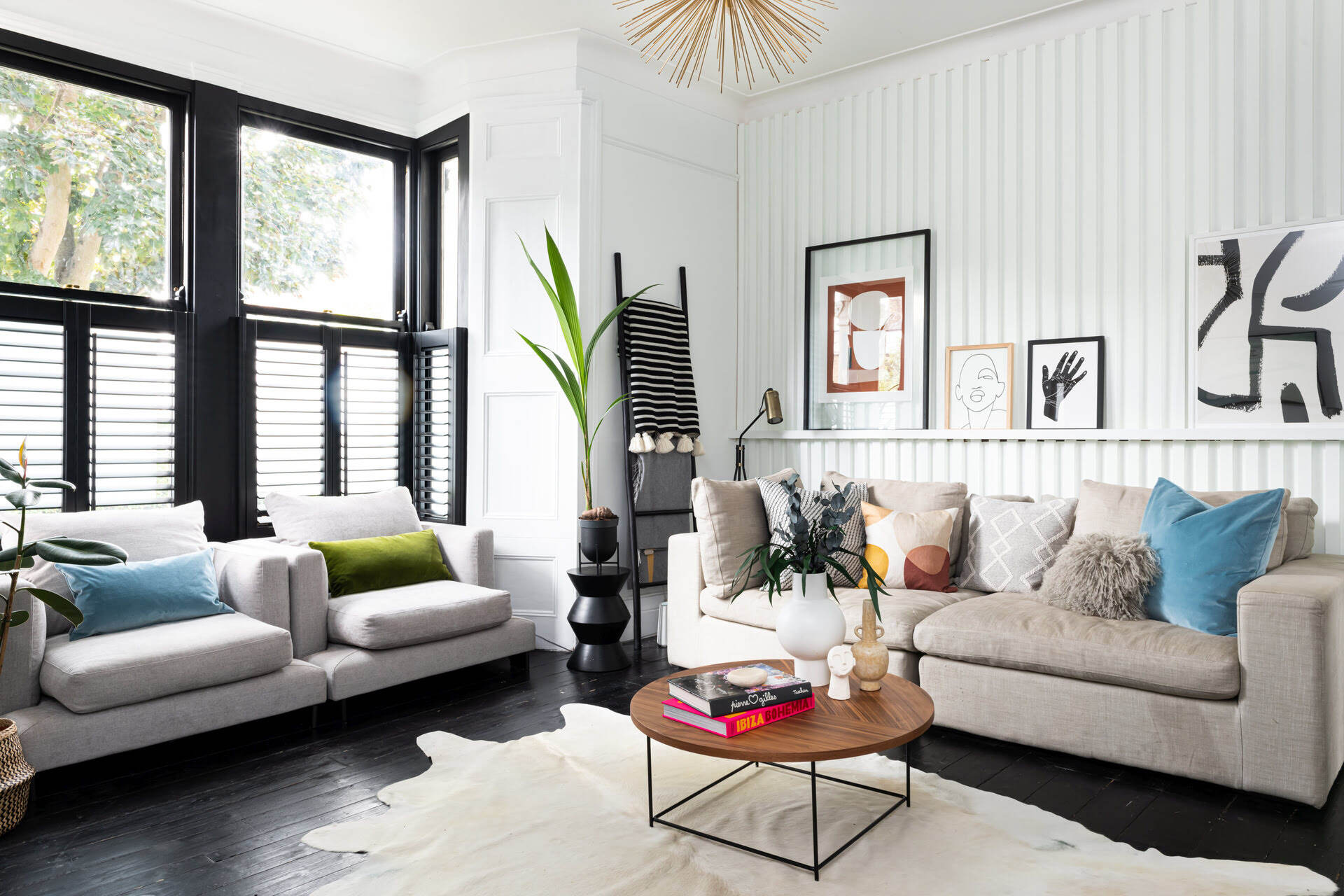
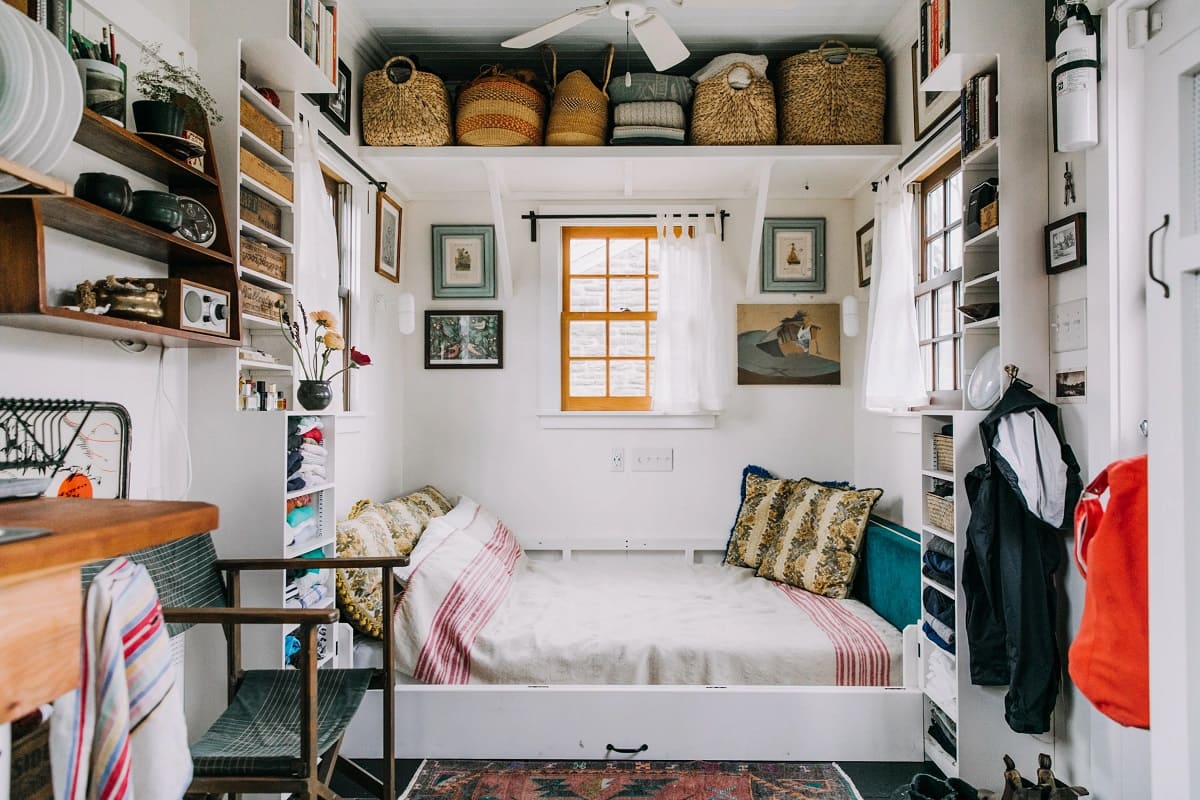
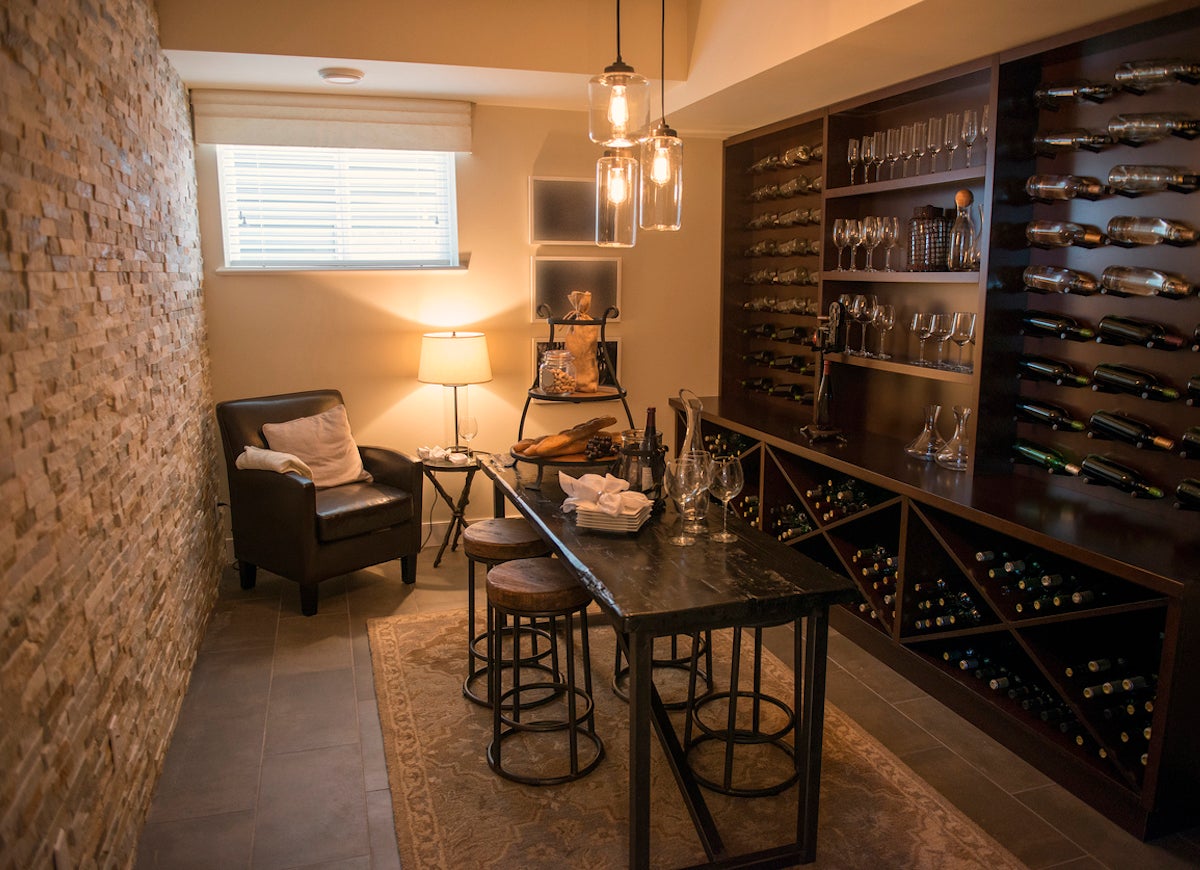
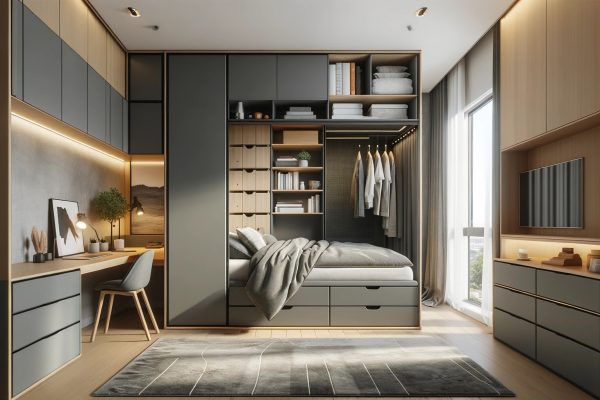
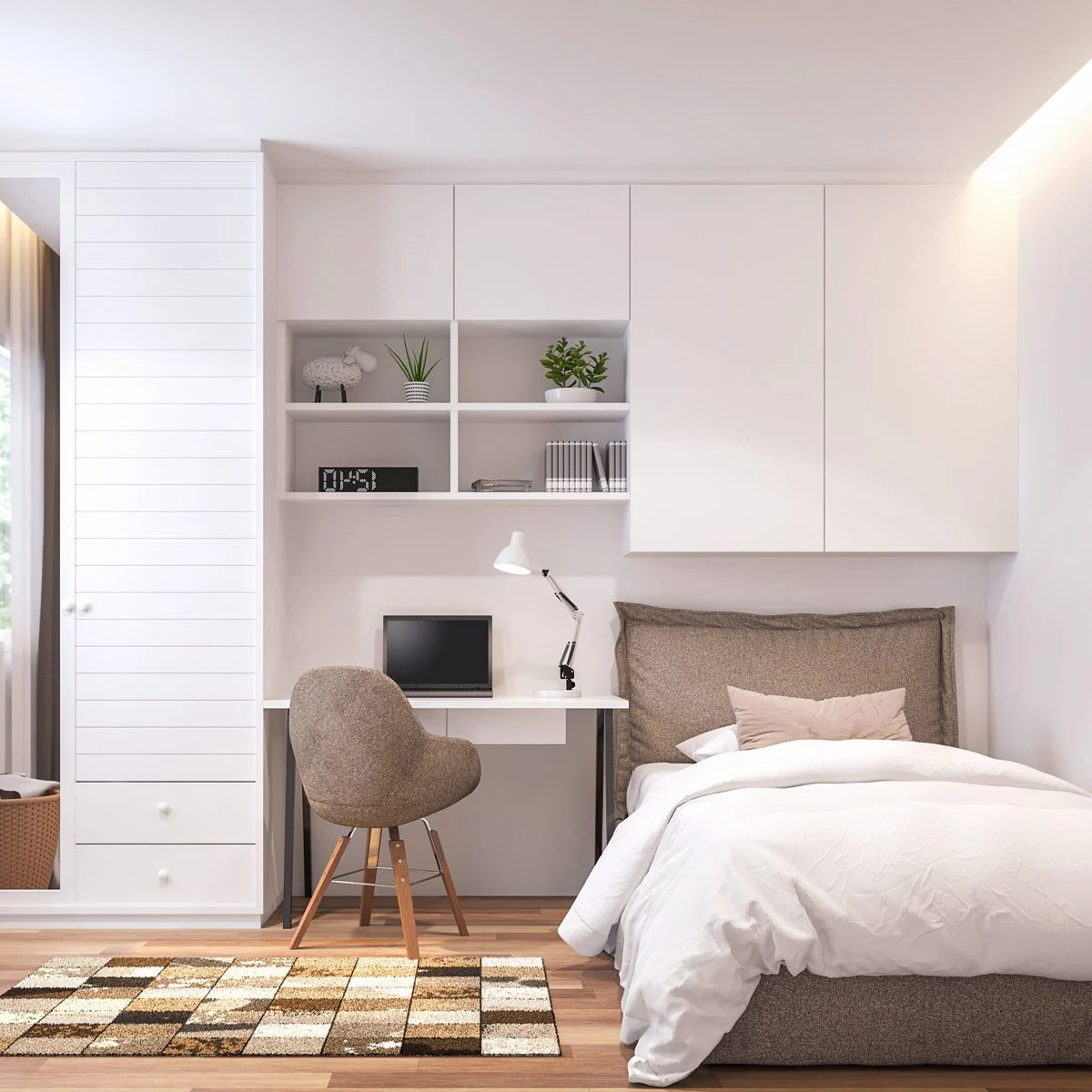
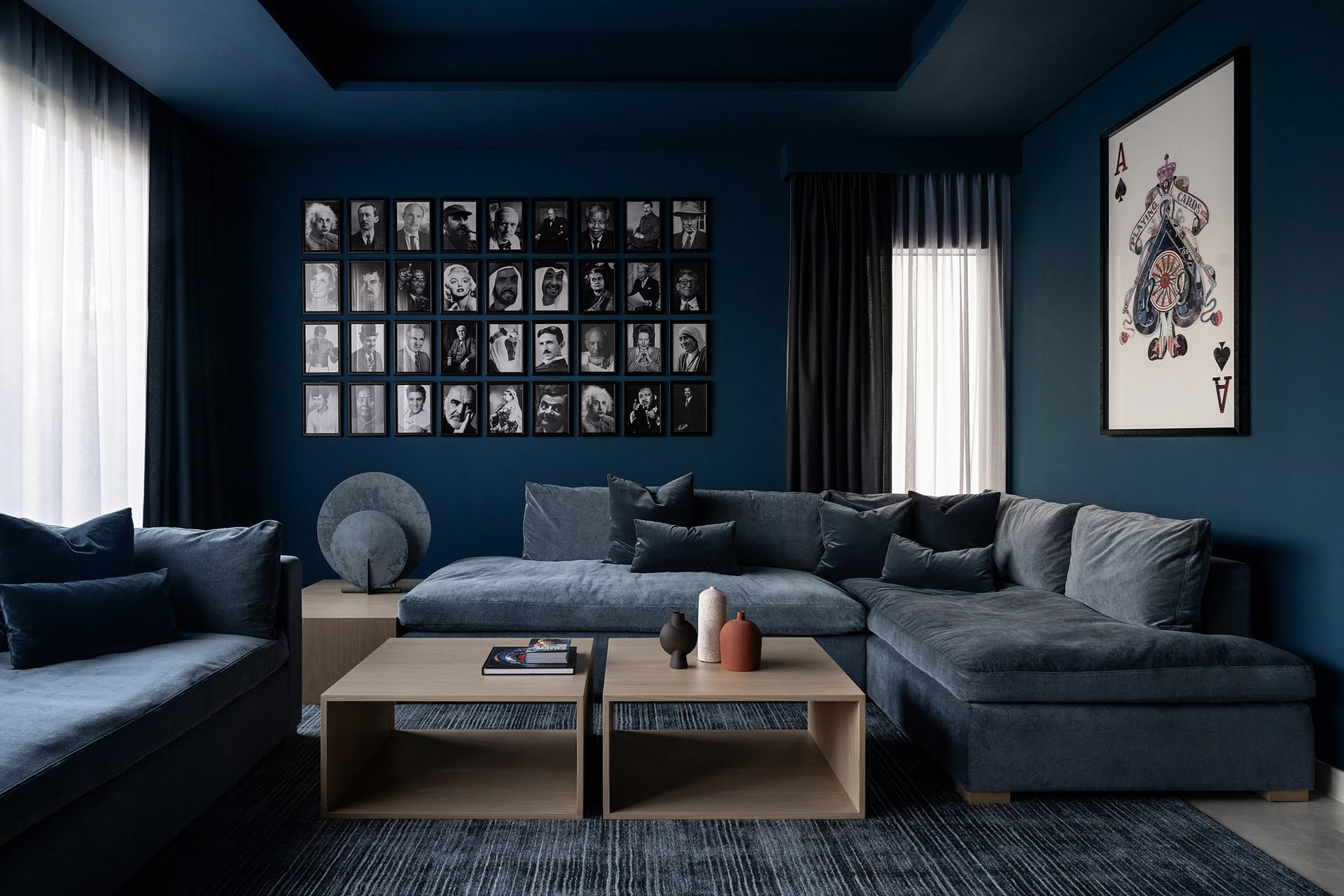
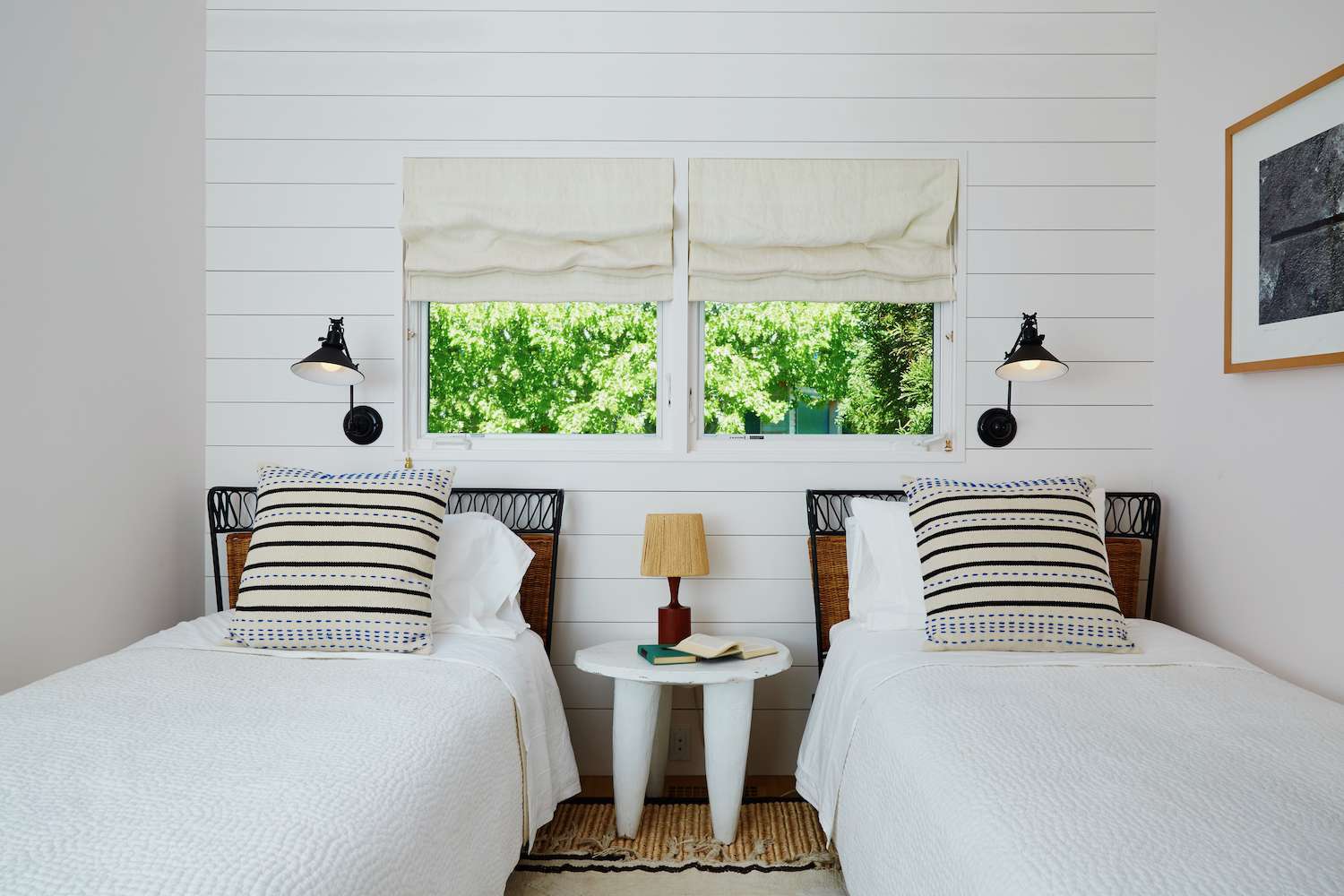
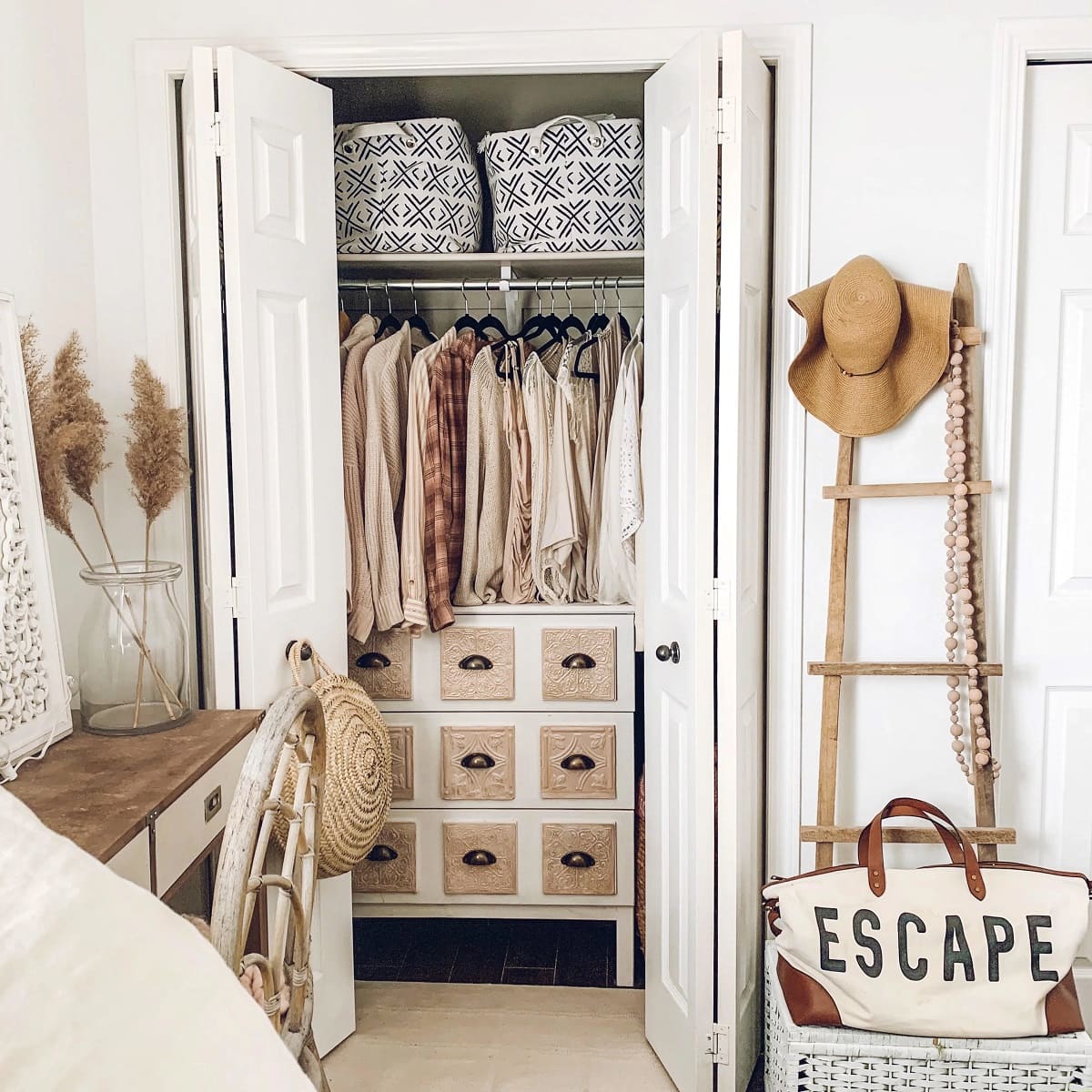

0 thoughts on “How To Maximize Space In A Small Bedroom: 10 Clever Ploys”